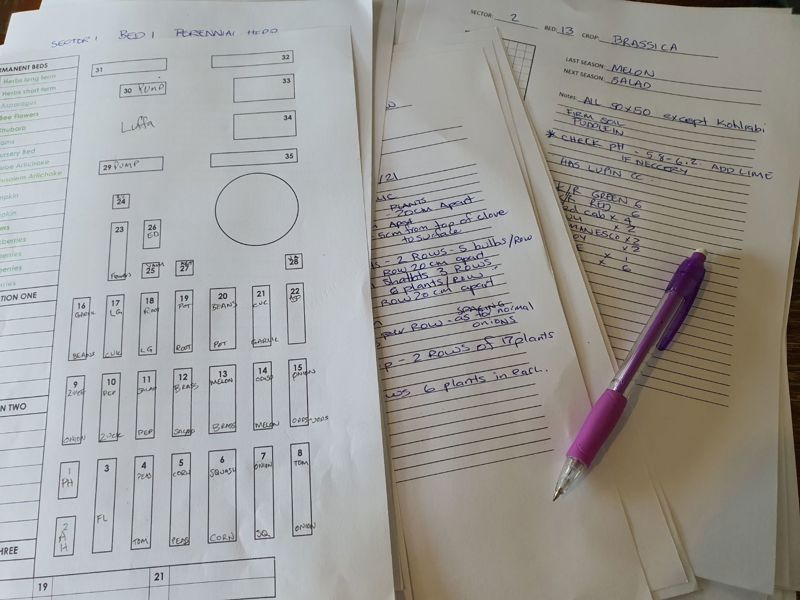I couldn’t help myself from jumping in here and sharing with you how I plan my garden. I have a large garden – there are 35 raised beds of varying sizes but most a 1 metre wide. My garden is in rows like little soldiers all standing to attention.
I had the opportunity when we first moved to this coastal location in 2018 to have any kind of garden I wanted. I knew how much I needed to feed my family as self-sufficiently as was possible so I allocated each crop a scaled down size on chopped up pieces of paper and moved them all about within the outline of the boundary of the land I had and try as I might for a beautiful potager I keep ending up with the soldiers.
The garden is divided into 5 sectors – on a Monday I take care of the needs of sector one and Tuesday is sector 2 etc. But also, I have 5 irrigation cycles and my crop rotations are based within the sectors. This also helps to plan things as each year in most rows all my plants move one space over to the next bed, so most things aren’t in the same place for another 7 years.
I created a blank template of my garden – one with an overall map and then one for each garden bed size with grids. Each season I print out garden bed grids for all the beds in the garden and staple them together as a sector group. Then I fill in the details.
But after all these years of knowing how many of each plant I need to feed my family well – going into a similar sized space – the spacings are same and the supports they need etc. So, I have most of the time I am just copying across the information from the previous year with any adjustments I noticed I needed from the previous year and had noted down on the document. I know if we are to have a year’s worth of onions then I need 7 plants in a row and I need 24 rows. Often the most interesting part of the planning is deciding to stick with trusted and beloved varieties or try something new.
The main map of the garden is laminated into several copies so I can use them like a whiteboard for different chores and activities. And I write detailed notes on each plan about the condition of the soil – how it was enriched and if a cover crop was used, and how the crop turned out and ideas for tweaking things next season. It becomes like a journal.
You can find out a little bit more about my planning over on my > BLOG<.
Once you have a good plan that works for your garden, it makes it easier to manage with each passing year.
All the best with your garden planning.
Happy gardening and as always – if you want to get in touch leave a comment below.
Sarah the Gardener : o)










Share
Share this blog on social media